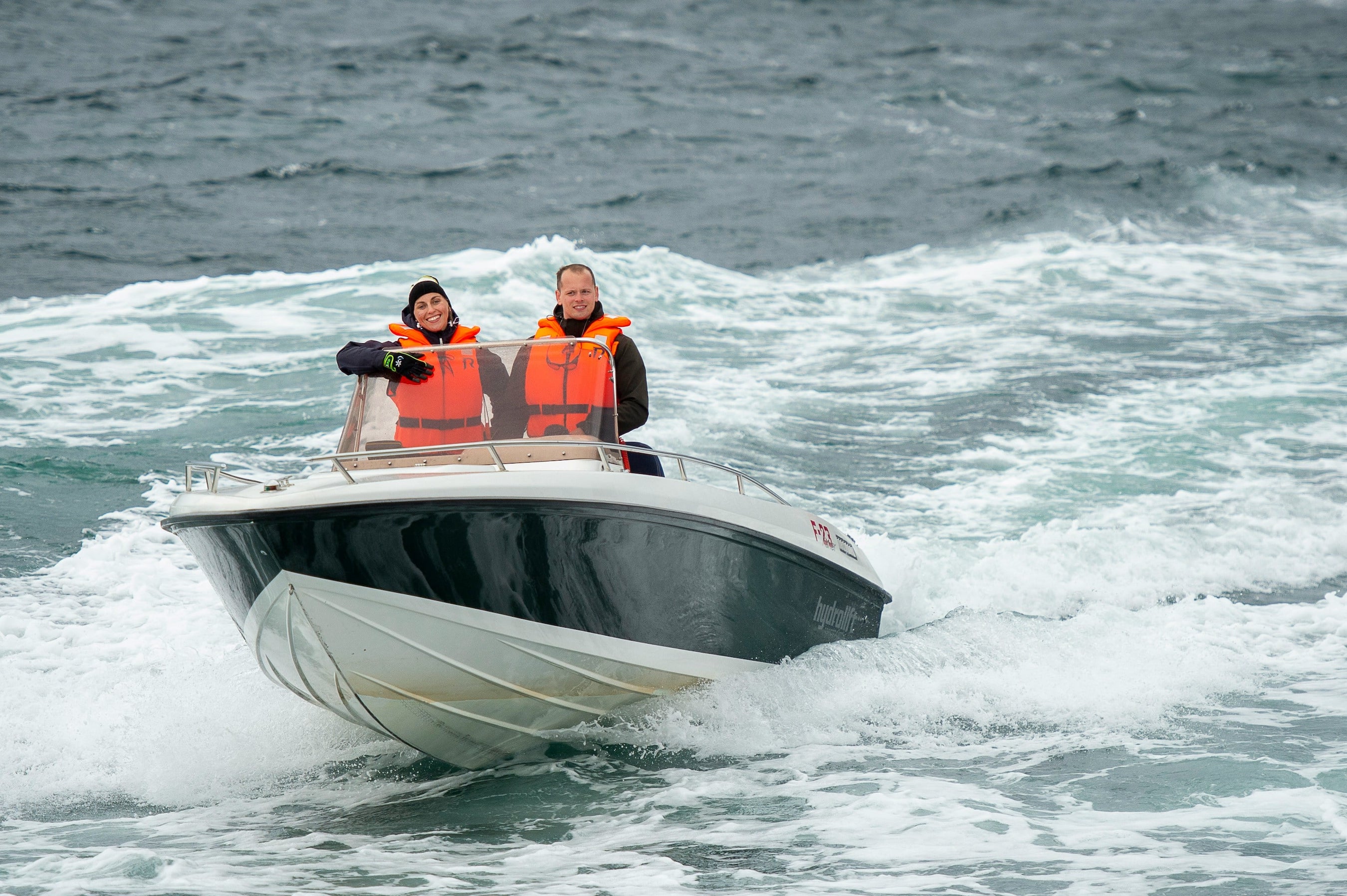The French boating market is experiencing a significant evolution with the emergence of boat leasing as a credible alternative to traditional purchasing. This financing formula, long reserved for the automotive and industrial sectors, is now attracting a growing number of boaters looking for financial flexibility. Faced with new boat prices that can reach several hundreds of thousands of euros and with maintenance costs representing up to 15% of the boat's value annually, leasing appears to be a pragmatic solution for accessing navigation without immobilizing significant capital. However, this formula raises a number of questions: is it really more advantageous than buying cash? What are the hidden constraints? How to choose according to your browser profile? This article deciphers the mechanisms of nautical leasing and guides you in this strategic decision that could transform your approach to yachting.
What is boat leasing?
Definition of nautical leasing
Nautical leasing, also called maritime leasing, is a method of financing that allows you to use a boat without immediately owning it. The principle is based on a tripartite contract between the boater, a financial organization and the seller of the boat. The financial institution buys the boat and makes it available to the tenant at monthly rent for a fixed period of time, generally between 2 and 7 years.
At the end of the contract, the tenant has three options: return the boat, buy it back for its residual value fixed in advance, or renew the rental contract. This formula offers great flexibility of use while maintaining the boater's cash flow.
Market players
The French nautical leasing market is structured around several types of players. Traditional banks such as Crédit Agricole, BNP Paribas or Société Générale offer leasing solutions adapted to the maritime sector. These institutions rely on their financial expertise to structure personalized contracts.
Companies specializing in nautical financing occupy a preponderant position. Players such as Nautic Lease, Ocean Financing or Boat Loan are developing a thorough knowledge of the market and offering conditions specifically adapted to the particularities of the sector. These specialists master the technical specificities of boats and the evolutions of the second-hand market.
Some manufacturers and dealerships also incorporate leasing solutions into their commercial offer to facilitate access to their products.
Eligible boat types
Nautical leasing applies to a wide range of boats, whether new or used. New boats generally benefit from more advantageous conditions, with preferential interest rates and longer financing terms. Builders can offer partnerships with financial organizations to facilitate the acquisition.
For used boats, eligibility depends on more stringent criteria: age of the boat, general condition, estimated residual value and maintenance history. Financial organizations generally require prior technical expertise to assess the value and condition of the boat. The age limit varies between schools, but is generally around 15 for sailing boats and 10 for motor boats.
Pleasure boats of all sizes can be affected, from small units of 6 meters to yachts of several tens of meters.
The advantages of boat leasing
Tax advantage for professionals and individuals
Leasing offers significant tax advantages, especially for boating professionals. Businesses can deduct lease rents from their taxable income, thus reducing their tax burden. This deduction applies to all monthly payments, including interest and capital amortization.
For individuals, tax benefits are more limited but exist in certain specific cases. When the boat is used for partial business purposes, such as vacation rentals or charter activities, a portion of the rent may be deductible from property income or BIC.
Professionals also benefit from optimizing their balance sheet, since the boat does not appear as an asset until it is purchased. This approach improves financial ratios and preserves debt capacity for other investments.
Reduced VAT in some cases
VAT on leasing can be the subject of interesting optimizations depending on the use of the boat. For boats intended to sail mainly outside European waters, specific devices allow you to benefit from reduced or suspended VAT.
Maritime transport or rental professionals can recover VAT on lease rentals, thus improving the profitability of their investment. This possibility extends to professional charter activities and sailing schools.
For individuals, certain situations allow them to benefit from VAT advantages, in particular when the boat is purchased in a European country offering more favorable fiscal conditions, subject to compliance with the conditions of use.
Financial flexibility: low initial contribution, controlled monthly payments
Leasing has a major advantage in terms of cash management. The initial contribution required is generally between 20 and 30% of the boat price, compared to 100% for a cash purchase. This approach makes it possible to preserve liquidity for other investments or to deal with the unexpected.
Monthly payments are calculated based on the depreciation of the boat and not on its total value, which reduces the amount of the installments compared to a traditional loan. This structure allows boaters to sail on newer or better equipped boats for a controlled monthly budget.
The predictability of expenses facilitates budget management, especially important for professionals who need to optimize their cash flow. The monthly payments remain fixed throughout the term of the contract, protecting against changes in interest rates.
Possibility to change boats regularly
Leasing offers remarkable flexibility for boaters who want to renew their boat regularly. This formula allows you to take advantage of the latest technological innovations without enduring the depreciation associated with ownership. Modern equipment, such as GPS navigation systems or remote monitoring devices such as Oria Marine IoT boxes, thus become accessible without heavy investment.
At the end of the contract, the transition to a new boat is carried out without the constraint of resale. This flexibility is particularly appealing to boaters who are passionate about technology or those whose needs change regularly. Families can thus adapt the size of their boat according to the evolution of their composition.
For rental professionals, this flexibility makes it possible to maintain an attractive and recent fleet, a determining factor for customer satisfaction and the profitability of the business.
The disadvantages and limitations of leasing
Overall cost often higher than a cash purchase
Leasing generates a total cost that is generally greater than a cash purchase, mainly due to financial interests and administrative fees. The difference can reach 15 to 25% depending on the duration of the contract and the terms negotiated. This difference is explained by the remuneration of the financial organization and the services associated with the contract.
Ancillary costs are added to the main cost: administrative fees, commissions, specific insurance and additional guarantees. These elements can represent several thousand euros over the total duration of the contract.
For used boats, a quick discount can create an imbalance between the rent paid and the residual value of the boat. This situation financially penalizes the tenant who would like to buy the boat at the end of the contract.
Long-term commitment
Leasing requires a firm commitment over several years, which is generally not cancellable without significant penalties. This constraint can become a problem in the event of a change in personal or professional situation. Early exit fees can represent up to 50% of the remaining rent, making this option very expensive.
The evolution of the needs of the boater is not always compatible with the rigidity of the contract. A family that is growing or whose children leave the home may end up with an unsuitable boat without the possibility of changing the contract.
Economic fluctuations can also impact repayment capacity, creating delicate situations for tenants who cannot easily disengage.
Strict conditions to be respected
Leasing contracts impose strict obligations in terms of maintenance, insurance and use of the boat. The renter must keep the boat in perfect condition, carry out the mandatory overhauls and respect a precise maintenance schedule. Any breach may result in financial penalties or contract termination.
The insurance must cover large amounts and include specific guarantees requested by the financial institution. These requirements can significantly increase the cost of insurance compared to owning a boat.
Use restrictions may limit navigation to certain geographic areas or impose periods of immobilization. These constraints can frustrate boaters accustomed to total freedom of use.
Restitution or repurchase at the end of the contract: not always advantageous
The end of the lease contract can lead to financial setbacks. The residual value set at the start of the contract may not correspond to the real value of the boat, especially in a volatile second-hand market. This situation places the tenant in a delicate position to negotiate the purchase.
The return imposes strict conditions on the condition of the boat. Any deterioration beyond normal wear and tear generates repair costs billed to the tenant. The evaluation criteria can be severe and lead to significant unexpected costs.
The transition to a new lease contract can be complex if the tenant is not fully satisfied with his experience or if his financial situation has deteriorated.
Leasing vs traditional buying: what to choose according to your profile?
Case 1: The regular amateur boater
The amateur boater who sails regularly during weekends and vacations must evaluate leasing according to several criteria. If his budget allows him to buy cash without financial constraints, the acquisition is generally more advantageous economically. Ownership offers total freedom of use and layout of the boat.
Leasing becomes interesting for this profile when the initial contribution represents a significant budgetary constraint or if the boater wants to sail on a boat that is newer than his means would allow by cash purchase. The possibility of regularly changing boats also appeals to enthusiasts who like to discover new types of boats.
Lovers who value peace of mind will appreciate the services included in some leasing contracts, including scheduled maintenance and extended warranties. This approach frees up time to take full advantage of navigation rather than managing the technical aspects.
Case 2: The boating professional or rental company
Boating professionals find leasing a financing tool that is particularly suited to their needs. The significant tax advantages, the deductibility of rents and the optimization of the accounting balance sheet make this formula attractive. The possibility of recovering VAT further improves the profitability of the investment.
For professional rental companies, leasing makes it possible to maintain a recent and attractive fleet without immobilizing significant capital. The regular rotation of boats ensures high customer satisfaction and justifies premium rental rates. The guarantees included in leasing contracts reduce the risks associated with breakdowns and unavailability of boats.
Sailing schools and nautical centers also benefit from this flexibility to adapt their fleet to educational and regulatory changes. The regular renewal of boats guarantees the safety of practitioners and the modern image of the establishment.
Case 3: The investor/buyer for rental purposes
Investors who wish to acquire a boat to rent must carefully analyze the profitability of leasing. This formula can be interesting if rental income largely covers monthly payments and generates a sufficient margin. The deductibility of rents optimizes the taxation of the investment.
Leasing has the advantage of limiting financial exposure in the event of a downturn in the rental market. The investor can more easily withdraw at the end of the contract if profitability is not there. This flexibility represents protection against economic risks.
However, the lack of long-term added value and the constraints of use may limit attractiveness for wealth investors. Direct ownership is often preferable for long-term investment strategies, especially in tourist regions where nautical real estate maintains its value.
Synthetic comparison
The choice between leasing and buying depends fundamentally on the financial situation, the objectives of use and the wealth strategy of each boater. Leasing is ideal for professionals looking to optimize their taxation and cash flow, as well as for amateurs who want to sail on recent boats without significant contribution constraints.
Buying cash remains the most economical solution for boaters who have the necessary cash flow and want to keep their boat for several years. This approach offers total freedom of use and the possibility of valuing the investment in the long term.
The classic loan represents an interesting compromise for boaters wishing to become owners while spreading the financing. This formula avoids the constraints of leasing while partially maintaining cash flow.
How to properly negotiate a leasing contract?
Points to watch out for: duration, residual value, purchase options
Negotiating a lease contract requires particular attention to several decisive elements. The duration of the contract directly influences the amount of monthly payments and the total cost of the operation. A longer term reduces monthly payments but increases the overall cost due to interest. The optimal balance depends on the repayment capacity and the goals of the boater.
Residual value is a crucial element in negotiation. This value, fixed at the beginning of the contract, determines the repurchase price at the end of the lease. A high residual value reduces monthly payments but can create an imbalance if it does not correspond to the real value of the boat at maturity. It is necessary to analyze trends in the second-hand market to assess the relevance of this stock.
Purchase options should be clearly defined in the contract. Some organizations offer early purchase options with preferential conditions, which are particularly interesting if the boater wishes to keep the boat before the expiry date. Negotiating these clauses can offer significant additional flexibility.
Ancillary costs to be anticipated
Ancillary costs often represent a significant part of the total cost of leasing. Administrative costs, generally between 500 and 2,000 euros depending on the value of the boat, must be included in the profitability calculation. These costs cover the study of the file, the expertise of the boat and the drafting of the contract.
The specific insurances required by the financial organization can considerably increase the annual cost. It is recommended to compare insurance offers and negotiate guarantees to optimize the coverage-price ratio. Some insurers offer preferential rates for leased boats.
The return costs at the end of the contract must be anticipated. These costs cover final expertise, possible repairs and administrative costs. Their amount may vary depending on the condition of the boat and the requirements of the financial organization.
Examples of online simulators
Several online tools allow you to simulate leasing conditions and compare offers. Specialized sites such as Nautic-Lease.com or Financement-Bateau.fr offer calculators integrating the main parameters of leasing. These tools make it possible to quickly assess the impact of the various variables on the total cost.
Financial organizations' simulators generally offer more advanced features, including ancillary fees and specific options. It is recommended to use multiple simulators to compare approaches and identify the best conditions.
The use of these tools must be accompanied by a personalized analysis with a specialized advisor to validate the hypotheses and adapt the conditions to the specificities of each situation.
Testimonies and feedback
Short interview with a boater who opted for leasing
Marc, a 45-year-old yachtsman based in La Rochelle, chose leasing for the acquisition of his 12-meter sailboat. “I opted for this formula because it allowed me to sail on a recent boat without immobilizing the contribution from my second home. The monthly payments of 850 euros remain bearable compared to my budget and I appreciate the peace of mind associated with manufacturer guarantees.”
However, he recognizes some constraints: “The maintenance obligations are strict and I have to have certain modifications validated by the financial organization. In addition, I cannot rent the boat to third parties, which limits the possibilities of amortizing the costs.”
His results after three years of leasing remain positive: “This formula allowed me to discover this type of boat before deciding if I want to buy it back. The possibility of switching to another model at the end of the contract is a real advantage for someone like me who likes to test different boats.”
Advice from a rental professional
Catherine, manager of a boat rental company in Cannes, uses leasing to renew her fleet of twelve boats. “Leasing allows us to maintain recent boats without impacting our cash flow. Our customers appreciate the modern equipment and the reliability of the boats, which justifies our premium rates.”
She highlights the tax advantages: “The deductibility of rents optimizes our taxation and improves the profitability of our business. In addition, we can recover VAT, which represents a substantial saving.”
According to her, the constraints remain manageable: “The maintenance obligations correspond to our professional standards and the required insurances effectively protect our business. The only delicate point concerns the negotiation of residual values, which is particularly important for our financial planning.”
Conclusion
Nautical leasing represents an interesting alternative to traditional financing, particularly suitable for professionals in the sector and boaters wishing to optimize their cash flow. This formula has undeniable advantages in terms of financial flexibility, tax advantages and the possibility of regularly renewing boats.
However, the generally higher overall cost and the constraints of use require an in-depth analysis according to each situation. Recreational boaters must assess their real needs and financial capacity before embarking on this path.
Leasing is a good option depending on the profile and goals of each boater. Professionals will find it a tool for fiscal optimization and cash management, while amateurs will be able to sail on newer boats for a controlled budget.
To make an informed decision, it is recommended to do a personalized simulation or to consult an advisor specialized in nautical financing. This approach will make it possible to accurately assess the financial implications and to negotiate the best conditions according to your specific situation.
FAQS
Is leasing available for a used boat?Yes, leasing is possible for used boats, but under certain conditions imposed by the service provider. The age of the boat, generally limited to 10-15 years depending on the type of boat, its general condition and its estimated residual value are the main eligibility criteria. Prior technical expertise is systematically carried out to validate the eligibility of the boat.
Can I sublet a leased boat?In general, the subletting of a leased boat is prohibited, unless specifically stated in the contract. This restriction protects the financial organization from the risks of intensive use and insurance problems. Some professional contracts may allow rental under strict conditions, especially for charter professionals.
What is the average initial contribution required?The initial contribution varies according to the organizations and characteristics of the boat, but is generally around 20 to 30% of the boat's price. For new boats or customers with a solid financial profile, this contribution can be reduced to 10-15%. Professionals often benefit from more advantageous conditions.
Can you get out of a lease during the contract?Yes, it is possible to cancel a lease contract before it expires, but this often leads to significant penalties. These penalties can represent 30 to 50% of the remaining rents, depending on contractual conditions. Some organizations offer early exit options with preferential conditions.
Are there any subsidies or fiscal arrangements related to boat leasing?Special VAT conditions may apply in certain cases, in particular for boats used outside European waters or in the context of professional activities. Businesses can deduct lease rents from their taxable income, creating a significant tax advantage. It is recommended to consult a chartered accountant to optimize these fiscal aspects.









